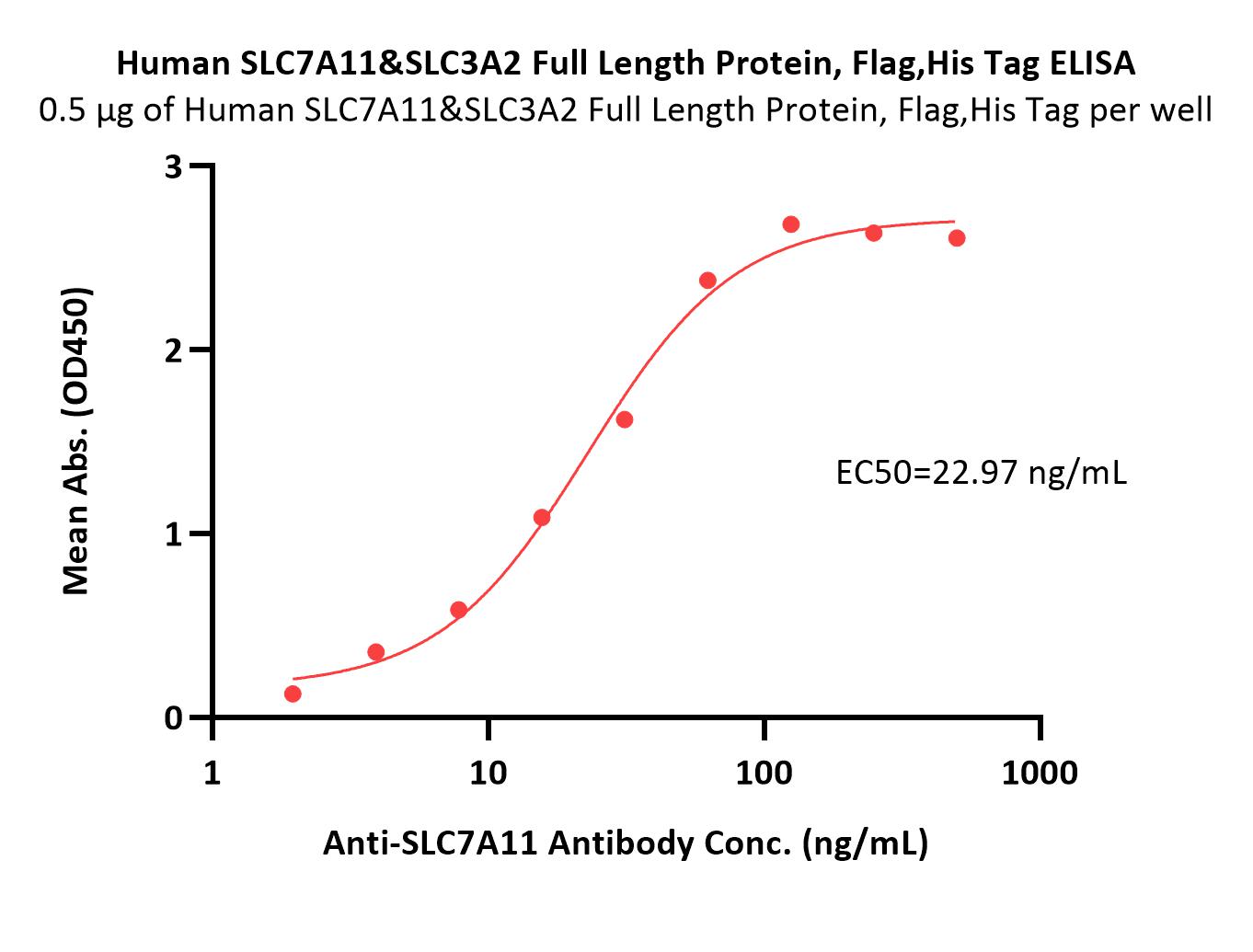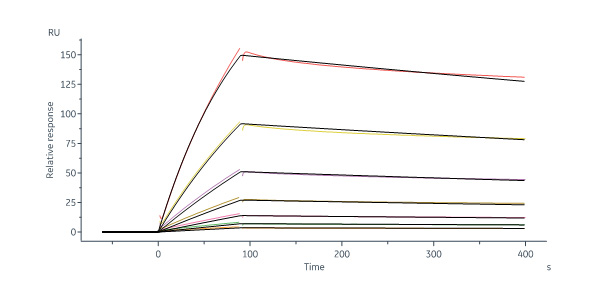分子别名(Synonym)
SLC7A11 & SLC3A2
表达区间及表达系统(Source)
Human SLC7A11&SLC3A2 Full Length Protein, Flag,His Tag (SLS-H52D3) is expressed from human 293 cells (HEK293). It contains AA Val 2 - Leu 501 & Glu 2- Ala 630 (Accession # Q9UPY5 & P08195).
Predicted N-terminus: Met & Met
蛋白结构(Molecular Characterization)
The SLC7A11 protein carries a Flag tag at the N-terminus and a polyhistidine tag at the C-terminus. The SLC3A2 protein carries a polyhistidine tag at the N-terminus. The protein has a calculated MW of 59.4 kDa & 69.9 kDa.
内毒素(Endotoxin)
Less than 1.0 EU per μg by the LAL method.
制剂(Formulation)
This product is not suitable for cell based experiments due to cytotoxicity of DDM.
DDM and CHS are INDISPENSABLE to keep membrane protein soluble and active, under no circumastance should you remove DDM and CHS.
DDM/CHS buffer (DC-11) is sold separately and not included in protein, and please contact us if you need the buffer.
If glycerol is not compatible to your application, remove glycerol just before immediate experiment, and NEVER store glycerol-free protein solution.
Supplied as 0.2 μm filtered solution in 50 mM HEPES, 150 mM NaCl, DDM, CHS, pH7.5 with glycerol as protectant.
Contact us for customized product form or formulation.
运输(Shipping)
This product is supplied and shipped with dry ice, please inquire the shipping cost.
存储(Storage)
Please avoid repeated freeze-thaw cycles.
This product is stable after storage at:
- The product MUST be stored at -70°C or lower upon receipt;
- -70°C for 3 months under sterile conditions.
活性(Bioactivity)-ELISA

Immobilized Human SLC7A11&SLC3A2 Full Length Protein, Flag,His Tag (Cat. No. SLS-H52D3) at 5 μg/mL (100 μL/well) can bind Anti-SLC7A11 Antibody with a linear range of 2-63 ng/mL (QC tested).
Protocol
活性(Bioactivity)-SPR

SLC7A11 Antibody captured on Protein A Chip can bind Human SLC7A11&SLC3A2 Full Length Protein, Flag,His Tag (Cat. SLS-H52D3) with an affinity constant of 21.7 nM as determined in a SPR assay (in presence of DDM and CHS) (Biacore 8K) (Routinely tested).
Protocol
背景(Background)
Cysteine plays an essential role in cellular redox homoeostasis as a key constituent of the tripeptide glutathione (GSH). A rate limiting step in cellular GSH synthesis is the availability of cysteine. However, circulating cysteine exists in the blood as the oxidised di-peptide cystine, requiring specialised transport systems for its import into the cell. System xc- is a dedicated cystine transporter, importing cystine in exchange for intracellular glutamate. To counteract elevated levels of reactive oxygen species in cancerous cells system xc- is frequently upregulated, making it an attractive target for anticancer therapies.























































 膜杰作
膜杰作 Star Staining
Star Staining











